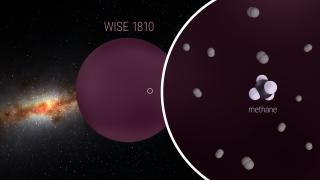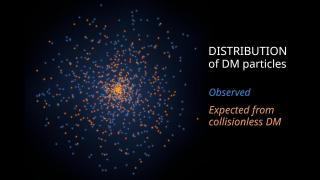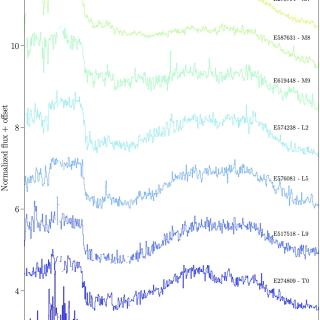We present a visual determination of the number of bright points (BPs) existing in the quiet Sun, which are structures thought to trace intense kG magnetic concentrations. The measurement is based on a 0farcs1 angular resolution G-band movie obtained with the Swedish Solar Telescope at the solar disk center. We find 0.97 BPs Mm-2, which is a factor 3 larger than any previous estimate. It corresponds to 1.2 BPs per solar granule. Depending on the details of the segmentation, the BPs cover between 0.9% and 2.2% of the solar surface. Assuming their field strength to be 1.5 kG, the detected BPs contribute to the solar magnetic flux with an unsigned flux density between 13 G and 33 G. If network and inter-network regions are counted separately, they contain 2.2 BPs Mm-2 and 0.85 BPs Mm-2, respectively.
Advertised on
References
(2010) Magnetic bright points in the quiet Sun. ApJ, 715, L26
It may interest you
-
 WISEA J181006.18-101000.5 (WISE1810) is the nearest metal-poor ultracool dwarf to the Sun. It has a low effective temperature and has been classified as an extreme early-T subdwarf. However, methane--the characteristic molecule of the spectral class T--was not detected in the previous low-resolution spectrum. Constraining the metallicity--the abundance of elements heavier than helium-- of these cold objects has been a challenge. Using the 10.4 m Gran Telescopio Canarias, the largest optical-infrared telescope in the world, we collected a high-quality near-infrared intermediate-resolutionAdvertised on
WISEA J181006.18-101000.5 (WISE1810) is the nearest metal-poor ultracool dwarf to the Sun. It has a low effective temperature and has been classified as an extreme early-T subdwarf. However, methane--the characteristic molecule of the spectral class T--was not detected in the previous low-resolution spectrum. Constraining the metallicity--the abundance of elements heavier than helium-- of these cold objects has been a challenge. Using the 10.4 m Gran Telescopio Canarias, the largest optical-infrared telescope in the world, we collected a high-quality near-infrared intermediate-resolutionAdvertised on -
 The existence of dark matter is probably one of the fundamental mysteries of modern science and unraveling its nature has become one of the primary goals of modern Physics. Despite representing 85% of all matter in the Universe, we do not know what it is. In its simplest description, it is made up of particles that interact with each other and with ordinary matter only through gravity. However, this description does not correspond to any physical model. Finding out what dark matter is requires finding evidence of some kind of interaction of dark matter that goes beyond gravity. In our workAdvertised on
The existence of dark matter is probably one of the fundamental mysteries of modern science and unraveling its nature has become one of the primary goals of modern Physics. Despite representing 85% of all matter in the Universe, we do not know what it is. In its simplest description, it is made up of particles that interact with each other and with ordinary matter only through gravity. However, this description does not correspond to any physical model. Finding out what dark matter is requires finding evidence of some kind of interaction of dark matter that goes beyond gravity. In our workAdvertised on -
 The Near-Infrared Spectrometer and Photometer (NISP) on board the Euclid space mission has obtained near-infrared (NIR) spectra of millions of objects, including hundreds of ultracool dwarfs (UCDs). Euclid observations retrieve images and slitless spectra simultaneously. This observing mode marks a new era in the discovery of new objects, such as L- and T-type dwarfs, which can be found from direct identification through the H2O and CH4 absorption bands. NISP spectral resolution (R ∼ 450) is enough to classify the objects by the spectral type using known standard templates. Q1 provided moreAdvertised on
The Near-Infrared Spectrometer and Photometer (NISP) on board the Euclid space mission has obtained near-infrared (NIR) spectra of millions of objects, including hundreds of ultracool dwarfs (UCDs). Euclid observations retrieve images and slitless spectra simultaneously. This observing mode marks a new era in the discovery of new objects, such as L- and T-type dwarfs, which can be found from direct identification through the H2O and CH4 absorption bands. NISP spectral resolution (R ∼ 450) is enough to classify the objects by the spectral type using known standard templates. Q1 provided moreAdvertised on